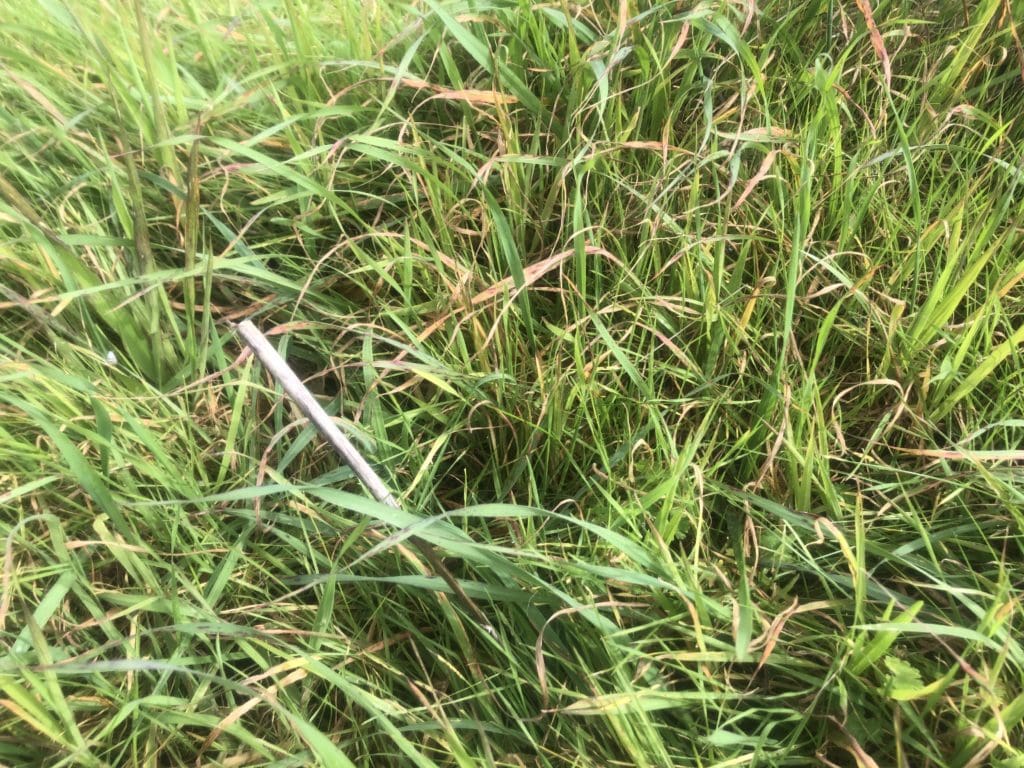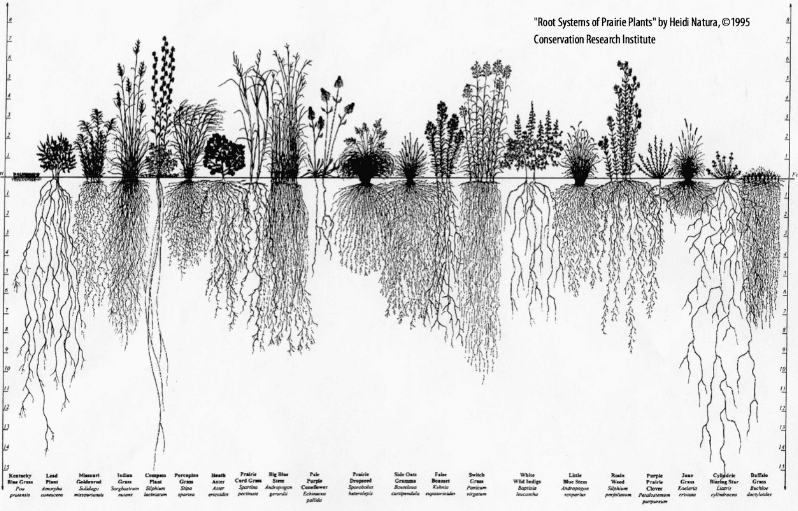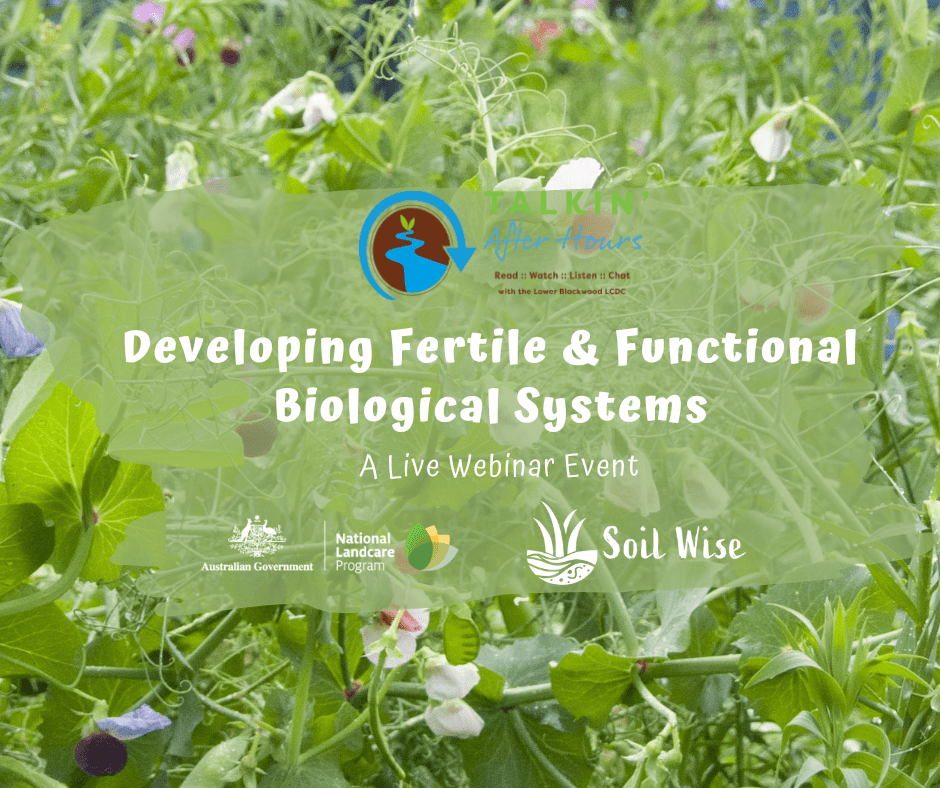Winter Induced Nitrogen Deficiency

At this time of year crops and pastures are prone to nitrogen deficiency. This happens because the biological activity behind processes such as nitrogen fixation, uptake and conversion, is compromised by shorter days, low temperatures, and limited oxygen in wet conditions.
The severity of winter induced nitrogen deficiency is somewhat determined by the state of a soil and the plant cover.

The appearance of classic winter deficiencies.

A healthy cover crop, seemingly unaffected by the conditions

Yellowing kikuyu next to a green multi species mix
Soils with good organic carbon levels fare better for a number of reasons:
- soil particles are bound together with carbon compounds into stable aggregates, making for better drainage and air flow
- carbon based humus has lots of negatively charged sites which vastly increase a soils capacity to stockpile ammonium ions generated by nitrogen fixation
- some forms of carbon serve as an alternative energy source for biology when supplies are short
Diverse stands of plants can be less prone to deficiencies that occur in biologically compromising conditions because:
- there are some plant species that grow better than others in cold/wet conditions and do their bit to maintain root exudation and fuel biological activity.
- plants growing in multispecies stands can recruit a wider range of biology, associated with the different plant species, including legumes, to acquire resources under varying circumstances, which are then shared via soil networks
- in diverse systems, plants tend to be healthier. Healthier plants photosynthesise at a higher rate and put out more root exudates, driving greater biological activity which further improves plant health and creates a positive feedback loop
Finally, other elements besides nitrogen, like sulphur and molybdenum, are needed for the all-important assembly of amino acids and complete proteins that microbiology and plants require so it is important to have adequate levels of these nutrients in our soil.
The apparent irony is that we need a good system in place, with the resilience, to maintain a healthy system when times get tough.
If we aren’t fortunate enough to be in that position, some extra measures may well be warranted to take things up a level. There are two basic approaches.
The first and most common is to supplementary feed nutrients to address deficiencies. Applying soluble forms of nitrogen can be a double-edged sword. We need to be careful because excess soluble nitrogen in the soil can decommission the very biology that is capable of making it available. Admittedly, that biology may be sluggish in winter, but it’s still somewhat active and plays an increasingly important role as conditions warm up and we head into the business end of the season.
A great solution to this quandary is to foliar apply nitrogen and avoid any issues associated with soil applications. The uptake from well-designed foliar sprays is very efficient so we can also significantly reduce the rates of nutrients that are usually applied to the soil.
One of the best ways to apply nitrogen is in the form of foliar urea. The beauty of urea is that it is an amine form of nitrogen, saving plants from having to spend energy converting nitrates or ammonia to amino acids. Foliar applied urea is absorbed as is, directly into the leaves of plants and significant response can be achieved with rates as low as 10kg/Ha. If you want to apply at higher rates or regularly it is best to use a low biuret urea (<0.4%) to avoid biuret toxicity.
We can add other fertilizers to the tank along with urea, provided the all products are compatible with one another. Useful examples include of Sulphate of Ammonia (2kg/Ha) for its Sulphur component, tech grade Mono Ammonium phosphate or MAP (5kg/Ha) for Phosphorous and Sodium Molybdate (50g/Ha) for Molybdenum.
The stabilisation and uptake of nutrients can be enhanced by combining them with a compatible carbon-based chelating/complexing agent. Urea can be combined in solution with either soluble humic acid (750g/Ha) or fulvic acid powder (350g/Ha). Not many fertilisers are compatible with humic acid so if you plan to include other things in the mix, stick to fulvic acid.
It is important to put out foliar sprays early in the morning or later in the afternoon when leaf stomata are open and to include some sort of spreader/sticker/surfactant.
The second approach would be to directly stimulate soil biology by feeding it in order to drive some nitrogen fixing activity. Due to the complex nature of soil biology, responses to such treatment may vary.
A combination of fish hydrolysate (4L/Ha) for protein and fat, molasses (2L/Ha) for carbohydrates/sugars and liquid seaweed (2L/Ha) for trace elements, applied with water as a soil drench would fit the bill. Two applications, 10-14 days apart, would be a good starting point.
You could hedge your bets and combine these two approaches by adding both plant nutrients and biological foods to the spray tank in what is referred to as a synergistic stack. What doesn’t get immediately taken up by the plants ends up in the microbiology that fosters subsequent supply.




This is great info Mark. We put out a foliar onto one of our paddocks on the weekend so let’s see what happens!
Thanks Mark, some great tank mixes there! I have just started down the foliar road this year, and need to learn a lot in this space. I have been focusing on trace elements based on EAL soil tests and tissue tests. I have used Nutri soil last two years as well…. Have you got any tips for dissolving urea?
Hey Eric, urea is endothermic so when you mix it with water the temperature drops.
This doc goes into a couple of details around how to dissolve it:
https://www.incitecpivotfertilisers.com.au/~/media/Files/IPF/Documents/Agritopics/31%20Urea%20Agritopic.pdf